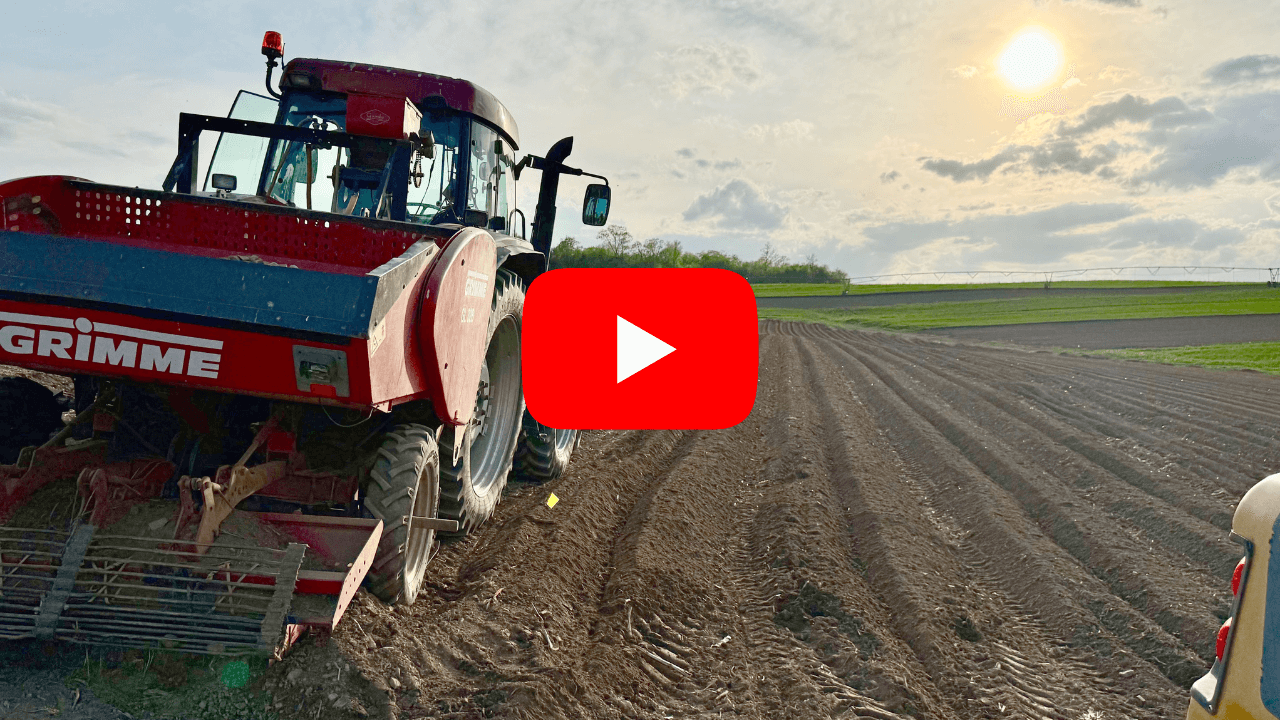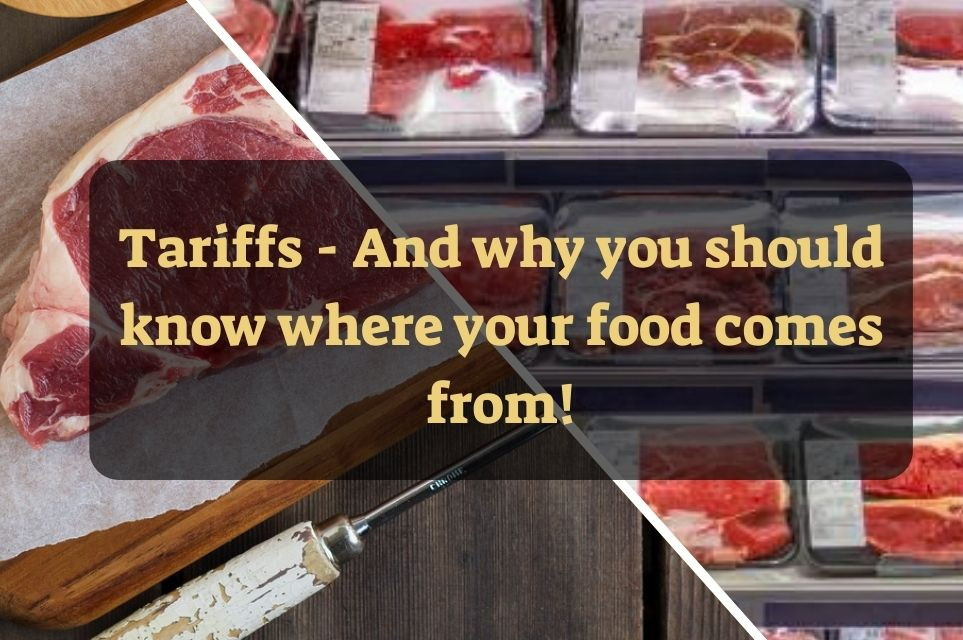Farm Stewardship at Red Hill Harvest
posted on
April 17, 2024
Last Easter, I shared the fact that we always try our best to nurture our community and environment through decisions based on our faith, ancestorial knowledge, and new information gained from experience and education.
I want to share with you, exactly how we do this day in and day out on our farm.

Before we get started I do have a brief disclaimer.
How our farm operates is not the only way or the perfect way to farm. However, we strive to do what is best for our farm, with the resources we have available, and to be good stewards of our land and animals.
We understand every farm and situation is different. We want to share the steps that we take to make sure we are putting the safest and most delicious food on your table for generations to come.
Now that that is out of the way, let's begin with how we care for our animals.
Animals
Daily Pasture Moves
I'm sure while taking a drive through the countryside, you've seen a pasture grazed down to nothing. It may be eaten to a length shorter then your lawn, leaving nothing but dust and dirt to try to regrow.
We avoid leaving our soils in this state of despair by moving the animals daily. Whether it be our chickens or cows, we arrange fencing in a way that keeps them from grazing an area of land too much.
We allow them to eat no more then 50% of the grass which helps the pastures to regrow quicker, allowing us to utilize our farm more efficiently as well as keep their stomachs full of high protein, nutrient dense plants.
We also allow the pasture to fully recover before we return to graze again (usually around 60 days, but it could be longer depending on the weather and time of year). This way we improve our pasture resource instead of degrading it.

Space per animal
Space for animals can be a big issue on the farm. To keep the business profitable, it is important to maximize the amount of animals per acre.
The number of cattle we run becomes incredibly hard to manage because, during the spring/fall, when the grass is growing at a rapid pace, we could feed up to 200 head of cattle, whereas in the summer/winter, when the grass is growing very slowly or not at all, 50 head would be a much more suitable number. We typically end up running around 110 head in the spring and decrease the amount throughout the summer and into winter to match our land's carrying capacity.
We like to feed as little amount of hay as possible by keeping the animals grazing out on the pasture, where they were designed to be. When the cattle are out grazing, they have the freedom to roam over the acre or two we have them temporarily fenced into, giving them plenty of space while still improving our land and giving it the rest it needs before regrazing.

Low-Stress Handling
We have about 250 acres of land, spread across 3 separate farms, fenced in for our cattle. Thankfully, 2 of them are adjacent to each other, so we can walk the cows across the road. However, to get to the other farm, we have to load them on a truck.
Every time you have to load an animal, it exerts some form of stress on them. We limit the amount of stress on moving days by starting early in the morning on the hot summer days, only using rattle paddles for encouragement (not electric prods), and keeping our voices calm to help them stay calm.

Protection from the elements
As you may know, we do not have a barn for our cattle. This is mainly because cattle are naturally protected from the harsh winter elements. Their thick fur coats help to keep them warm and they also have the ability and instinctive knowledge to huddle together in a herd. When the weather calls for a heavy wind storm, we set up a windbreak to make sure they can get protection from the elements.
The same goes for the warm summer months when they shed their thick winter coats and know where to look for the coolest spots on the farm. We always try to find a shady spot for them to graze during the dog days of summer.

Land
Limited-tillage
We limit the amount of tillage we use between crops to allow the microbiology to survive in our soil. These tiny organisms cling to the roots of our plants and help them to bring in nutrients needed for life. By keeping the roots in the soil intact, we can also reduce the amount of erosion that happens during major weather events.
These microbes also need water and air to thrive. Soil with lots of pore space allows for both water and air to move into the root zone (like water flowing through a sponge). Tillage breaks up these pore spaces and collapses the soil structure, leading to less water and air and ultimately less microbiology.
Why not no-till?
We do as much no till as possible, however in some instances tillage is a necessary tool. We use tillage in ground we will plant potatoes in and also to establish new seedlings in organic fields.

Cover crops
Cover cropping is a farming practice that is used to keep living roots in the soil in between "cash crops". This cover crop helps to reduce erosion and compaction, as well as, builds soil fertility.
We typically plant multi-species cover crop which pulls nitrogen, carbon, and other important elements from the atmosphere into our soils. This biodiversity of species allows each plant to feed off one another and be utilized to the fullest extent.
Soil always wants to be covered by some type of living plant. If you take a drive throughout the countryside in the spring you can see a green hue over the brown corn and soybean stubble. These are weeds popping up trying to cover the soil. We plant cover crops in the fall, to keep the soil active and also eliminate the need for a spring herbicide spray.
See if you can pick out which fields are ours in the picture below!

Natural Amendments
Another trick we use to boost our soil health naturally is by using natural soil amendments. In unison with our other practices, we are able to increase fertility without harming our soil biology with synthetic nitrogen and fertilizers.
Some forms of natural amendments we use on our farm -
Liquid Humus
Compost
Animal Manure
Seaweed
Fish Oils
Molasses
These amendments are much easier for our plants to access compared to their synthetic counterparts, making it a much more effective solution for us.
Contrary to popular belief, there is plenty of fertility found in nature to grow profitable crops, we just need to equip our plants with the ability to bring it out of the atmosphere and into the soil.

Animal Impact
Putting animals back on our farm is arguably the best decision we have ever made.
Animals provide so many benefits to our farm it would be impossible to fit them all in this newsletter! Not counting their manure, they kickstart life in the soil, combat unwanted weeds without tillage or chemicals, and even their saliva has microbiology that goes into the soil and helps plants to grow. Crazy right?
By bringing animals back onto our farm, we have begun to close the nutrient gap of making our farm self sufficient. So many farmers rely on costly synthetic inputs to boost their soil health. If one of these inputs would become unavailable, our ability to produce food would be gone.
One ongoing example of this is the collapse of the Francis Scott Key Bridge which shut down the Baltimore port. Most if not all of the synthetic fertilizer used in the eastern United States comes through this port. Now that the port is shut, fertilizer is much harder to find, making the price skyrocket.
By closing the nutrient gap, we are able to make our farm more resilient. This keeps us safe from relying solely on outside and often unreliable supply chains.

We take pride in being your farmer and we always want to strive to create healthier food for you and your family to enjoy.
I mean, that's why you're reading this blog right?
You are invested in becoming more informed and confident about the way your food is being produced. You understand that it's not just a label that says 100% grass-fed beef, or pasture-raised eggs, or organic, it's a product cared for by 3 generations working together with a common goal in mind.
To provide HEALTHY, SAFE, and BETTER food, from our family to yours.




